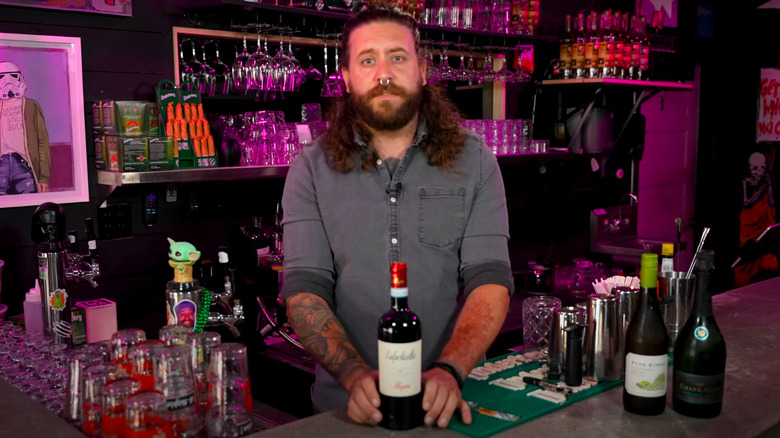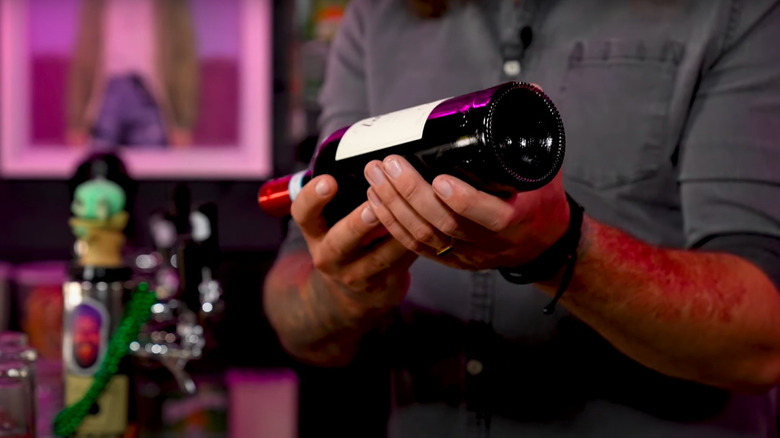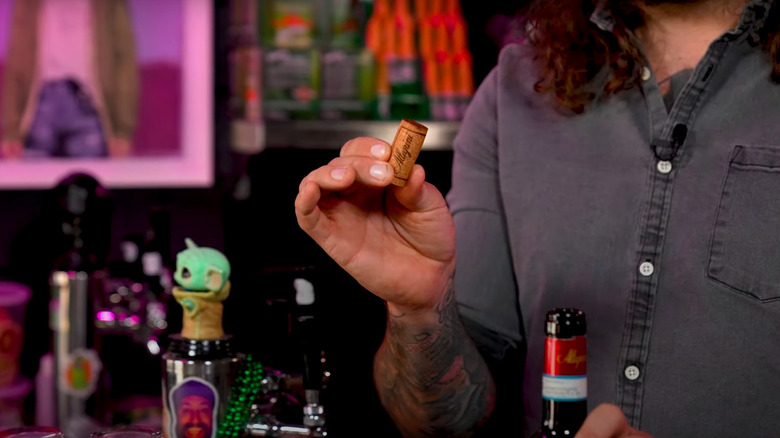The Wine Storage Mistakes That Compromise Your Favorite Bottles
We may receive a commission on purchases made from links.
If you've ever been thoughtful enough to pick up a bottle of wine for dinner, a house warming gift, or simply for your own future self to enjoy, you've likely had to consider the dos and don'ts of storing it. Most people likely follow the same general guidelines: chilling your whites and keeping your reds at room temperature. But as mom always says, just because everyone else is doing something, doesn't mean that you should too. Nothing could be more true as it pertains to the ways you store your wines.
As discussed in Julia Mullaney's article for Chowhound, a lot of the wine storage methods that are so commonly followed and accepted are actually mistakes — ones that could completely compromise your favorite bottles before you even get the chance to pop (or twist) them open. Craft bartender Kamaron Lockwood went over some of the biggest mistakes in a video on Chowhound's Youtube channel, where he not only shared tips on how to store all of your reds, whites, and sparklings but also how to avoid doing it wrong.
Temperature isn't as simple as the fridge or the countertop
One of the first things that Lockwood points out is that not all wine should be stored the same, but it's not quite as clear cut as leaving your reds on the counter and your whites in the refrigerator. While that is a step in the right direction, he notes that red wine sits best at a temperature between 55-65 degrees Fahrenheit. That's cooler than most people keep their homes, and there's no reason why you can't chill your reds — in fact, it's one of the best ways to drink it, especially if it's a lighter, fruitier variety.
Lockwood cautions against storing your white and sparkling wines inside of the refrigerator. Instead, he opts for keeping them in an environment closer to 40-50 degrees Fahrenheit — about 5 to 10 degrees warmer than the temperature most kitchen refrigerators are set to. But it's also important to keep humidity in mind too. The simplest way to create and maintain this kind of environment for your wines is to invest in something like the Antarctic Star wine cooler, as it allows you to set specific temperature and humidity levels.
Bottle angle makes a difference
According to Lockwood, where you place and store your wines is as important as how you place them. Just like how there are optimal temperatures for storing different varieties of wine, there's also an optimal way to position them within said temperatures. This all goes back to the previous note about humidity, which Lockwood says should be around 70%. That's because, when it comes to storing and aging wine, the moist environment helps to avoid oxidation by ensuring the cork doesn't dry out. But with really nice wines, Lockwood also advises you to store your bottles at an angle.
Now, if you have a white wine with a twist cap, this obviously won't be much of an issue because you won't have a cork to worry about drying out; you can continue storing those bottles upright. But, you will notice that most wine racks on the market are designed to hold your bottles sideways, slightly tilting down. This position is ideal because it angels the wine towards the cork, which helps keep it moist. While there's always a possibility of getting a bottle with a bad cork, this will ensure that it comes out clean and that your wine tastes exactly the way it's intended to.
Re-using the cork isn't effective
On the topic of the cork, Lockwood is adamant that you do not reuse it to store leftover wine for later consumption. While he does acknowledge that some people might like to save them for memory's sake (especially when they've been cleanly removed after being stored correctly), he stands firm on his stance that they lose virtually all of their usefulness once they've been taken out. There's also a misconception that corks can be used to tenderize protein, but the science is dubious.
Rather than sticking the cork back into the neck of your bottle, Lockwood has another suggestion. For red wines, he recommends getting yourself an airtight stopper like the one from Vacu Vin, which comes with a pump that removes any oxygen that got into the wine while it was open and reseals it. This way, you don't lose any of those flavors, and the wine will taste just as good as it did when you first poured it — as long as you drink it within three days.
As for sparkling wines, Lockwood has another suggestion: a Champagne wine cage. With a Champagne wine cage similar to the Kloveo Champagne stopper, Lockwood explains that these stoppers clamp down over the spout of your wine bottle and actually create pressure inside that works with and maintains the carbonation. While both options will keep your wine for up to five days, Lockwood says that one to three days is preferable.
Static Media owns and operates Tasting Table and Chowhound.


